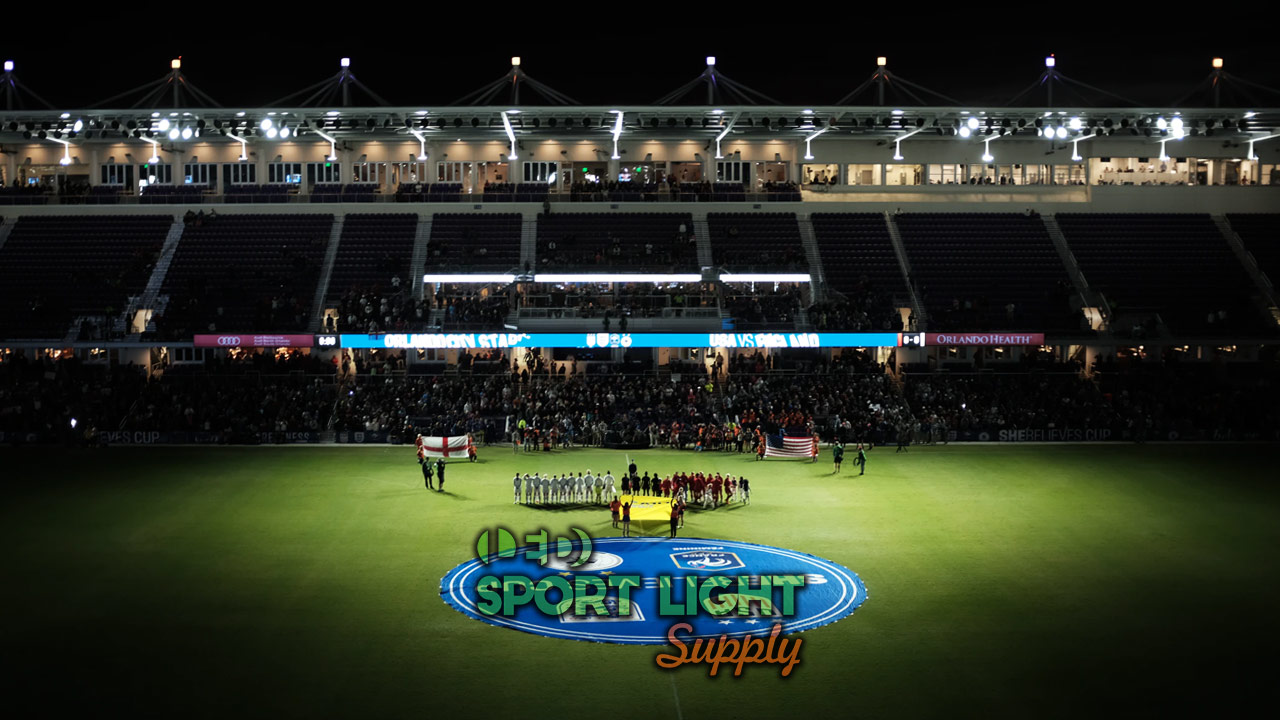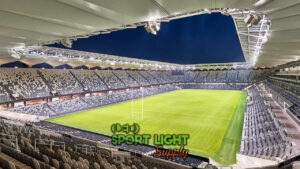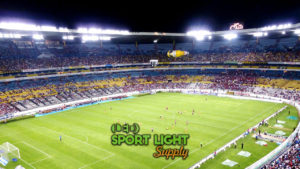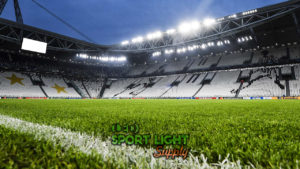Most stadiums will use High-Intensity Discharge Lamps (HID) for the vast majority of their lighting. Typically stadium lights have a much higher wattage than another outdoor lighting. The downside of these lights is the length of time it takes to turn them on and reach optimum efficiency. This can sometimes cause problems, as was witnessed at Super Bowl XLVII, where play was delayed for 34 minutes after an outside power feed caused some of the stadium lights to go off.
Why do Metal Halide stadium lights take so long to warm-up?
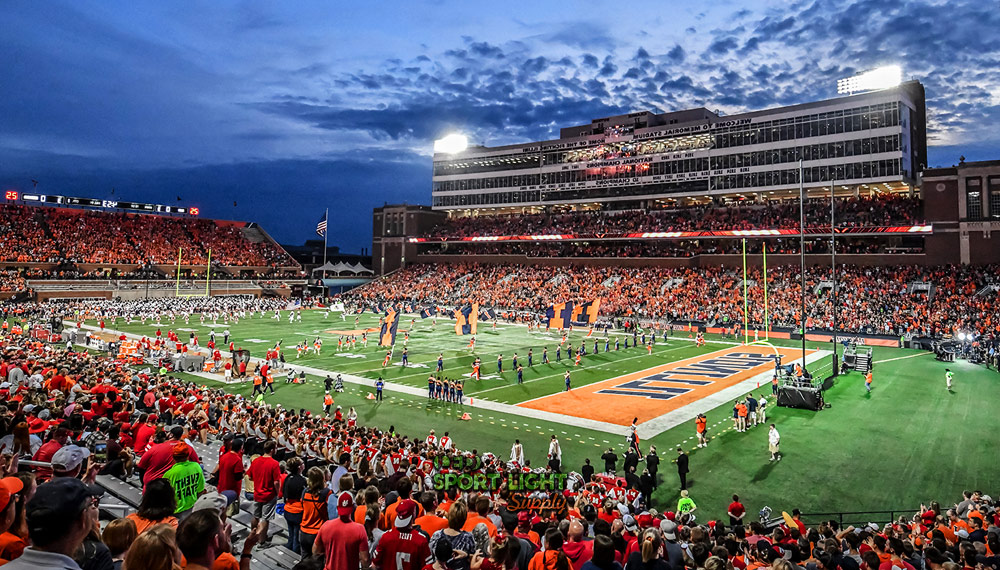
Many stadiums still use Metal Halide (MH) lighting, and one of the properties of metal halide lights is that they do not reach the desired light output for a few minutes. In fact, they can take between 5 and 20 minutes to reach approximately 90% of their full brightness. Generally, what happens is that stadiums compensate for this by turning on the lights while it is still light so that by the time the lights are actually needed, they have reached the required light.
The public will normally see a dim glow when the lights are first turned on. During the warm-up period of up to 15 minutes, the light will gradually change in color and get brighter until it eventually reaches the correct temperature. The lights are functioning normally.
This period of waiting is typically referred to as the warm-up time (aka run-up time). An additional, related problem is that when you turn off the lights, it is necessary to allow the arc tube to cool down again before switching it back on. This time that has to be allowed for the lamps to cool off before they can be switched back on is called the restrike time.
Do High-Pressure Sodium Lights start-up faster than Metal Halide?
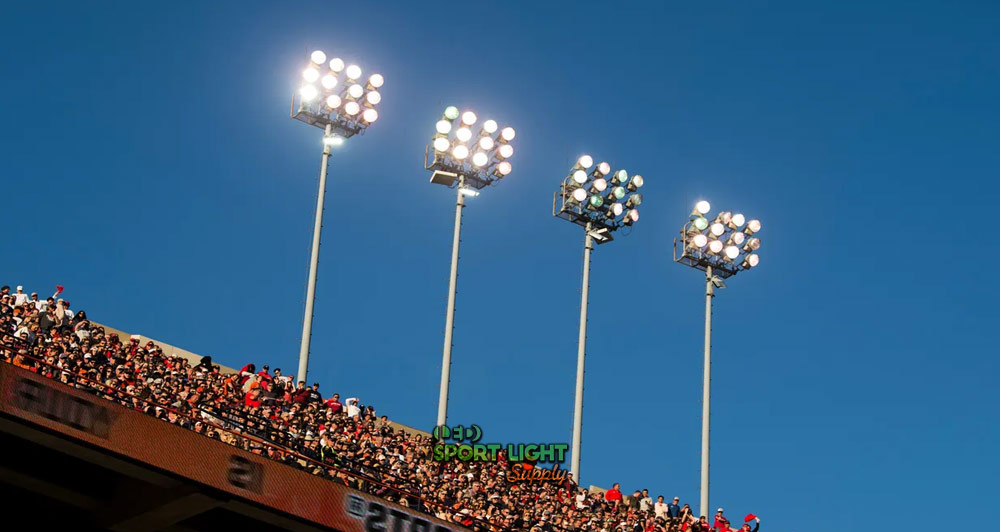
When you switch on a High-Pressure Sodium (HPS) lamp, there is also a delay before reaching optimum intensity. This can be up to 10 minutes. High-Pressure Sodium lamps have an arc tube that is stabilized by a frame. The arc tube interior is a very high pressure (this makes the lamp more efficient). The arc is gradually heated and the mercury vapor inside will light, giving off a blue color. The lamp continues to heat-up and finally the sodium will turn to vapor, as the light is emitted at full power.
What temperatures do Metal Halide Lamps reach and are they dangerous?
As long ago, as 2005 Oregon State Officials issued a warning about Metal Halide lamps’ potential danger that reach 1000ºC to 2000ºC can rupture without warning due to both internal and external causes. The warning was issued following an incident that resulted in 80 Lake Oswego teachers presenting symptoms after exposure to ultraviolet radiation from a cracked Metal Halide bulb in the school gym. The incident resulted in temporary blindness, sensitive skin, and burned corneas.
There pressure only to install Metal Halide lamps that self-extinguish if the casing is cracked, in public areas.
What is the Solution?
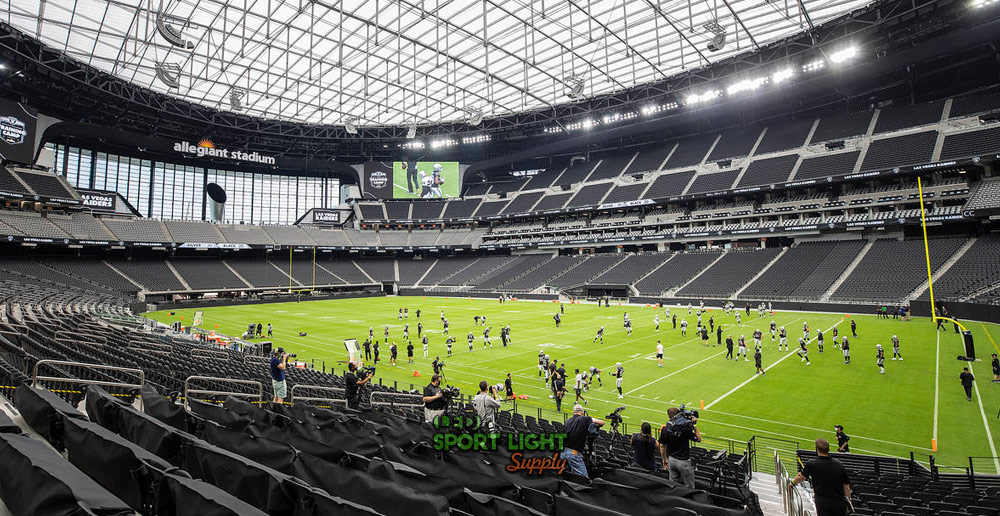
Increasingly we have seen an amazing growth of al alternative method of Sports Stadium Lighting, with the replacement of LED lights.
One of the biggest dangers with Metal Halide is the intense heat that is generated by the bulbs, a Metal Halide light can fall or explode for several reasons, and if they do, they rain molten glass onto anything below. If that is flammable, it can and will start a fire, like the one that recently destroyed an industrial site in New York.
A safe alternative to Metal Halide, which will also turn on and off instantly is the LED lamp. LED lights do not suffer from the same failure that caused the Metal Halide lamp to fall in New York
LED Stadium lights have three primary advantages of Metal Halide.
- Reduction in Electricity Used
- Reduced cost of maintenance
- Better performance (dimming and instant on and off).
Invented in 1962 LED lighting has come on in leaps and bounds recently. It is the ideal solution for stadium lighting as it is more cost effective, better for the environment, provides better lower glare lighting, LED Lighting is much more controllable and allows instant switch on, instant switch off, and easy dimming options.

